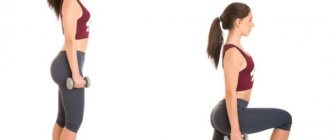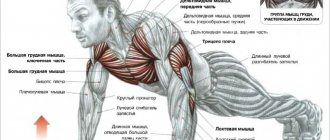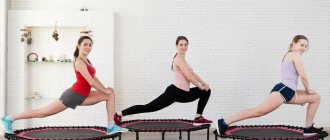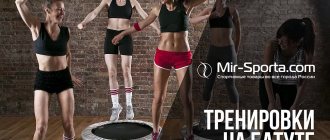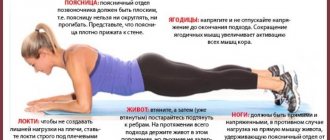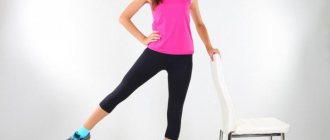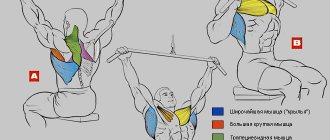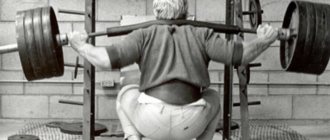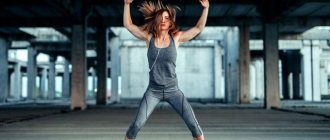Trampoline exercise is considered one of the best forms of exercise for adults. When you jump on a trampoline, you will experience momentary weightlessness at the highest point of the jump, but when you reach the lowest point of the trampoline's springy net, your body will weigh 4 times the normal weight on the surface of the Earth. You will be amazed at the many health benefits that happen thanks to this fun activity. Why?
Because this activity combines health and fitness benefits that other exercises cannot achieve. In this article, you will learn about 17 benefits of trampoline exercises, if you do any of them, you will definitely get a stronger body and better health.
1.A fun way to lose weight and stay in shape
According to the NASA Journal of Applied Physiology, jumping exercises are 68% more effective than running. NASA research also reports that people weighing 150 pounds (68 kg)
within 1 hour of jumping, you burn more calories than in 1 hour of running.
Long hours of cardio exercise in an attempt to lose weight can actually backfire because prolonged periods of "breathing" exercise can lower your metabolism.
Jumping on a trampoline is an exercise that supports metabolism, and this is very important for weight loss.
If you jump at a moderate pace, you can still breathe as comfortably as possible. You move without stressing your metabolism. For more effective weight loss, jump for 15-20 minutes at moderate intensity at least three times a week.
So, just jump and stay in shape.
Equipment for classes
To train on a trampoline, jumpers must have special equipment:
- light gymnastic trousers, overalls - for men;
- swimsuit - for women;
- special trampoline slippers.
Girls' hair must be collected and tightly fixed so that it does not interfere with the performance of complex elements. Each team has the same clothes, the uniform of the participants is always marked with the mark of the club for which the athletes compete.
We advise you to read about how to learn to jump rope.
Increased lymph flow in the body
The lymphatic system is a network of tissues and organs that helps get rid of toxins in the body, waste, and other unwanted materials in the body.
This is the body's metabolic cesspool. Unlike the cardiovascular system, in which the heart automatically pumps blood, the lymphatic system relies entirely on our body movements like a nose.
The cardiovascular system:
- Heart, blood vessels, blood;
- Function: transportation of gases, nutrients, waste, hormones.
The lymphatic system works through our conscious movements. Jumping on a trampoline is a full-body exercise. This activity can lead to the simultaneous opening and closing of the lymphatic valves, which will increase lymphatic flow by 15 times.
Jumping Rules
There are also certain rules that must be followed when practicing on a trampoline:
- Regularly check the projectile for the integrity of the blade and the reliability of the protective seals to avoid injury.
- There should be no foreign elements under the canvas, on the floor or ground, the space should always be free.
- Before classes, you need to do a warm-up to warm up your body.
- Before class, be sure to wear comfortable sports clothing and remove jewelry.
- After entering the projectile, tightly cover the mesh opening.
- During the lesson, you must ensure that the exercises are performed correctly.
- One person always trains on one trampoline.
- You cannot exercise if you are feeling unwell; it is better to reschedule the lesson for another day.
- Monitor the condition of your body, do not overwork, if you feel tired, finish the workout.
- When children jump, there must be an adult next to the apparatus.
- When you have finished the lesson, do not jump off the trampoline, but carefully get off.
Strengthening detoxification and cleansing of the body
Trampoline exercises improve the body's natural detoxification mechanism. Jumping is a unique form of exercise in which weightlessness is achieved at the highest point of each jump and landing, and the force of gravity is doubled with each take-off.
This change in gravity benefits every muscle and cell in the body and is very beneficial to the lymphatic system.
As blood flows through the body, lymphatic fluid passes through the blood vessels into the tissues of the body. This fluid nourishes the cells and bathes the body's tissues, forming tissue fluid. The liquid then collects waste, bacteria and damaged cells. To detoxify, jump for at least 15 minutes daily.
Types of load and training effectiveness
This table shows the load levels on the trampoline:
| Training levels | Beginners | Average level | Advanced |
| Pulse zones | Up to 150 heart rate beats | Up to 160 hits | Individual control, but not higher than 180 strokes |
| Plyometric exercises | Low jumps from squats, scissors, multi-jumps on two legs, soft jumping jacks, step-steps. | Full squat jumps, scissor jumps, burpees with trampoline jumps, high knee jumps. | All of the above, plus jumping from squats and lunges with weights, burpees over a trampoline. |
| Strength exercises with small equipment - dumbbells, mini-barbells, shock absorbers. Strength exercises without weights, using the floor or trampoline. | Push-ups, goblet squats, dumbbell lunges, bent-over rows, crunches, shoulder presses, and dumbbell biceps and triceps exercises. | Push-ups with legs on a trampoline from the floor, strength exercises with medium-weight mini-barbells, hybrid movements - thrusters, lunges with biceps curls, rows and dumbbell presses. | Plyometric push-ups with hands on a trampoline, movements with mini and full CrossFit barbells, jerks and jerks of weights, swings of weights, hybrid exercises - thrusters, all types of rows with broaches, cleans of barbells. |
| Number of workouts and modes | 2-3 workouts per week strictly every other day of rest. | 3-4 workouts. | 3-4 workouts. |
Workout for weight loss
Weight loss exercises begin with a warm-up on the floor, steps for 4-5 minutes. Then alternate:
- 1 minute of jumping or jumping jacks with 3 minutes of rest on steps, light strength exercises or weightless movements.
- Over time, you can alternate 1 to 2 and 1 to 1.
- The most stringent protocol is duplicating the strength exercise with plyometrics.
For example, first a person does a goblet squat for a minute, and then jumps out of a squat on a trampoline for a minute. After this, immediately without rest - the second approach. In fact, the rest is 10-12 seconds, which are necessary to change equipment.
Home workout
The simplest training set for a beginner looks like this:
- Walking and joint gymnastics without a trampoline – 5 minutes.
- Regular squats on the floor without equipment – 1 minute.
- Jumping on a trampoline with a slight squat - 1 minute.
- Glute bridge without weight – 1 minute.
- Press (twisting) – 1 minute.
- Regular push-ups from the floor - 1 minute, you can do push-ups from a support.
- Jumping jack – 1 minute.
- Pull the rubber shock absorber to the belt in an inclined position – 1 minute.
- Free multi-jumps on 2 legs, small amplitude – 1 minute.
This cycle can be repeated 2-5 times depending on your well-being and level of fitness. All muscle groups are involved, resulting in a significant cardio load. At the end of the workout - 3 minutes of walking until the heart rate calms down and stretching.
Improving the functioning of the immune system
The lymphatic system is a vital part of the immune system. It is a defense mechanism against viruses, bacteria, diseases and infections. Lymph contains large numbers of a specific type of white blood cell called lymphocytes. Lymphocytes are responsible for fighting infections in the body. They also eliminate damaged and abnormal cells in the body.
Jumping causes valves in the lymphatic system to open and close simultaneously, increasing lymphatic flow by 15 times.
It boosts immunity, removes toxins and helps slow down the aging process. In addition, the immune system is improved by enhancing red bone marrow activity and supporting tissue repair.
Read the instructions “how to learn to jump on a trampoline”
Almost the same method as described above. Yes, the instructions were written for beginners and will contain a lot of useful information. For example, that you need to wear Czech shoes or thick sports socks during your first lessons so that your feet don’t hurt from landing on the hard mesh. But not a single paper, not a single instruction, no matter how detailed, can show the movements the way a trainer does.
Strengthening the skeletal system and increasing bone mass
Research has shown that the increased gravitational force on the bones during jumping strengthens the bones without injury or fracture. Trampoline exercise increases bone density, which prevents the development of osteoporosis.
What are the benefits of jumping fitness?
Such cardio training has a positive effect on the functioning of the cardiovascular system. Regular exercise increases blood and lymph flow, increases lung volume, and improves oxygen exchange. During high-intensity physical activity, excess salt leaves the body through sweat. Jumping fitness helps to tone your body muscles and get rid of excess weight. Exercises on a trampoline for weight loss have a complex effect on the body:
- strengthen the cardiovascular system;
- charge with energy;
- enhance metabolism;
- stimulate blood circulation;
- promote saturation of blood and cells with oxygen;
- increase the overall endurance of the body;
- improve the functioning of the vestibular apparatus;
- load the muscles of the legs and abs;
- serve as an excellent prevention of flat feet.
Many women, after a month of attending jumping fitness classes, note improvements in the functioning of the hormonal system. Discomfort during menstruation and constant fatigue disappear. Due to the fact that the spine is extended during jumps, the posture of trainees improves. Some athletes note that thanks to regular “jumping” training they were able to get rid of chronic migraines.
Requirements for students
People of any age can engage in jumping fitness. Some sports centers even have groups for children from 3 years old. Elderly people should consult a doctor before exercising. “Jumping” training for weight loss is suitable not only for children and women, but also for men. It is also indicated in cases where a person is overweight. But for complete beginners it is better to choose another sport, because... Training requires a certain level of endurance.
Improved oxygen circulation throughout the body, resulting in increased cellular energy
The NASA Journal of Applied Physiology lists interesting facts discovered after studies of trampoline exercises. When comparing heart rate and oxygen consumption between mini-trampoline exercise and running, a significant increase in the “biomechanical stimulus” of jumping was found.
This means that trampolining is better for the body than running, which is why trampoline exercises are used to help astronauts recover after being in space to prevent muscle and bone degeneration. Ski jumping automatically improves the mitochondria of each cell, which causes additional cell demand for energy in the body. This will increase energy and the body's ability to use this energy.
Thus, thanks to trampoline exercises, your metabolism will start working and you will lose weight for some time after the end of the session. You will also be energetic throughout the day.
Preliminary Skills
Barani
- In this skill, the player must perform two skills. The player must first perform a front flip, and while turning, the player must perform a half turn, which will make him/her land facing the opposite direction.
Crash Dive
- also known as ¾ Front. In this skill, the player first needs to do a three-quarter front somersault and while landing, he needs to do a back landing.
Cody
- In this skill, the player first needs to do a reverse throw, and while landing, he/she must perform a front drop and jump back to perform a backflip.
Rudolf
- in this case, while in the air, the player must perform a front somersault with one and a half turns before landing.
Full in Full out
- In this skill, while in the air, the player must perform a double backflip with a full turn on each flip.
Full in or Full out
- In this skill, while in the air, the player needs to perform a double backflip with a full turn in either the first or second somersault.
Full in Half out
- In this skill, the player must perform two front somersaults along with a full turn in the first somersault and a half turn in the second somersault.
Miller
- In this skill the player must perform two backflips with one twist in the first somersault and two twists in the second somersault.
Miller Plus
- This skill is very similar to the Miller skill. Here the player must perform two backflips with two full turns in the first somersault and two more full turns in the second somersault.
Miller Plus Plus
- This skill is an advanced version of the Miller skill. Here the player must perform double backflips with five full turns. He can perform 2½ turns in both somersaults, or two full turns in the first somersault and three full turns in the second somersault.
Half out
- In this skill the player must perform a double front somersault with a half twist in the second somersault.
Rudy out
- In this skill, the player needs to perform a double front somersault with one and a half turns at the end of the second somersault.
Fliffus
- In this skill, the player can either perform a double front somersault or a double back somersault with at least one half twist.
Randolph
- In this skill, the player needs to perform a somersault with two and a half turns.
Ball Out
- In this skill, the player first needs to perform a back fall and then while flying up from the back fall, he/she must perform a front and back somersault. This skill is usually performed after a crash drive that ends in reverse.
Full Half
- In this skill, the player must perform a double front somersault with one twist in the first somersault and a half twist in the second somersault.
Full Rudy
- In this skill, the player must perform a double front somersault with one twist in the first somersault and one and a half turns in the second somersault.
In the case of individual trampolining, the final score is based on two different scores. If the player performs the skills smoothly without any mistakes, he will get good points and points will be deducted in case of a mistake while performing the skills.
Two separate juries will oversee the work and degree of difficulty. Five judges are appointed to evaluate the player's skill performance and assign a score out of ten, while another panel of two judges is appointed to assess the degree of difficulty, usually giving a score ranging from 11 to 15.
Points awarded for performing skills are as follows:
- For a full somersault 0.4 points
- For a quarter somersault 0.1 points
- For a full turn 0.2 points
- For half a twist 0.1 points
For skills that involve turns and somersaults, the points are added together.
The highest and lowest scores among the five individual scores assigned by the five judges for the performance are discarded, and the remaining three scores are added together and added to the other two scores assigned by the panel of difficulty judges, and the final score is considered the overall score for that player. In the event of a tie, the two reset scores are reintroduced to determine the winner.
Failure to touch the trampoline with both feet at the same time costs 0.3 points, while touching the trampoline post with your hands costs 0.4 points. Even touching the trampoline bed with both hands and knees is worth 0.5 points.
The player receives points based on skill difficulty level and performance. In the case of other related types of trampolines such as synchronized trampoline, tumbling trampoline and double mini trampoline, the playing procedure varies. Although the basic rules are very similar in all types, they differ from each other in game settings and strategies.
In all types, players are required to perform ten different sets of recognized and creative skills such as jumps, flips or turns. Players are awarded points based on style, as well as control over the execution of tricks. These different types are as follows:
You train your entire body without putting unnecessary pressure on your legs and feet
Many cardiovascular exercises such as brisk running and jogging improve your heart rate. Unfortunately, running or jogging in place puts excess pressure on your joints, legs, and feet. This can lead to pronation, which can even cause injuries to the joints, ankles, knees and back. Jogging or trampolining are more effective because you can exercise for a long time without feeling tired or putting pressure on your joints. When jumping, there is no strong impact on the body as when exercising on a hard surface. The gravitational force provided by trampolining increases the tone of the body because not only the heart and legs work, but the whole body.
Jumping on a trampoline
The trampoline technique consists of combinations that combine various rotations, turns with landing in one of four positions:
- On your feet.
- On the buttocks.
- Frontal fall.
- Falling backwards.
As a general rule, exercises should always begin and end on your feet.
Story
The first individual competitions were held in colleges and schools in the United States , and later in Europe. In the early years, the competition did not have a specific format. Gradually the competition became more codified, thus paving the way for the first World Championships, which took place in London in 1964.
In 1969, the first European Championships . From this time until 2010, European and world championships were held in different years. Now the world championships are held annually.
In the United States, the trampoline was introduced into school physical education programs and was also used in private entertainment centers. However, after a number of injuries and lawsuits caused by poor oversight and inadequate training, the trampoline is now primarily used in specialty gyms with certified trainers.
Elsewhere in the world, the sport was most actively promoted in Europe and the former Soviet Union. Since trampoline became an Olympic sport in 2000, many other countries have begun developing exercise and training programs.
According to the Centers for Disease Control and Prevention, trampolining is a moderate-intensity . These exercises are in the same class as gymnastics and light yoga and are ideally suited for gradually reducing body weight.
One of the new products is jumping fitness , with which you can quickly lose weight. Classes are held on a special trampoline accompanied by music. This type of fitness can be called trampoline aerobics. Treadmills: mechanical, magnetic or electric.
How many calories you burn on a trampoline depends on factors such as your overall fitness level, gender, age, exercise level and weight. For example, a 60 kg woman burns about 143 calories per hour while exercising on a trampoline. This is comparable to an hour of walking, but there is no stress on the joints of the legs.
One of the lesser-known facts is that studies have shown trampoline jumping to be one of the most beneficial methods for reducing cellulite.
This form of exercise is better than running and many other forms of exercise. Many people do not like to run as the main disadvantage of running is the physical stress on the legs, so using a trampoline is a wonderful option for older and obese people.
Exercises on a trampoline:
- Stimulates metabolism.
- Train the vestibular apparatus.
- Improves oxygen circulation in tissues.
- Improves lymph circulation.
- Strengthens the heart.
- Increases energy and vitality.
Additionally, they provide physical and mental benefits for both adults and children.
The cardiovascular system
Unlike some sports such as jogging and tennis, trampolining has a relatively low impact on the joints . This is because your vertical acceleration and deceleration is absorbed by the platform, which takes over 80% of the impact.
Strong Bones
This type of exercise improves the mineral state of bone tissue. Each jump is equivalent to twice the force of gravity: a force that allows development, helping to prevent bone disease or osteoporosis. This happens because the trampoline absorbs most of the impact of your landing, protecting your joints while your muscles are strengthened.
Mental health
Jumping can make you feel happier, more positive, and even more confident. Endorphins, natural mood-enhancing substances, are released through all exercise, including:
- run;
- cycling;
- lifting weights;
- sex.
But the fun factor of jumping up and down will make you smile and laugh and feel really happy, which is good for your overall health.
Acceleration of metabolism
Trampoline exercise has been shown to increase metabolic rate, helping the body absorb nutrients more efficiently, which has a positive effect on weight.
Coordination and skills
This is a great way to develop skills that allow you to perform a number of tasks simultaneously that require concentration. Jumping and other exercises have a positive effect on bilateral motor skills, and also allow you to control different muscles and limbs at the same time.
Convenience
A home trampoline provides a specific space in which you can exercise. You don't have to travel to the gym or tennis courts, you don't have to find a running or bike route, you don't even have to change into special clothes.
It is recommended to jump on it for at least five minutes a day to increase cellular oxygenation, strengthen weak muscles and joints, improve aerobic capacity and, most importantly, cleanse the lymphatic system. And finally, this is a very fun way to train.
Children and trampolining
Jumping stimulates almost all of children's senses, resulting in brain activity. Since visual and auditory functions are directly regulated by the vestibular system, bouncing helps develop vision and visual-motor skills.
Trampolines also provide rich proprioceptive input, information from muscles and joints, and kinesthetic awareness (information about the body's movement and navigation in space). This input is critical to the development of body awareness and spatial awareness .
Jumping movements create an ever-changing center of gravity. Children learn to sense these gravitational shifts and respond accordingly by adjusting their positions.
As they move up and down, there is a constant flow of messages between both sides of the body and the brain to ensure balance is maintained.
The sense of balance, timing, agility and rhythm acquired during these movements improves overall coordination and helps in the development and acquisition of new motor skills.
Ten minutes of jumping is a better workout than thirty minutes of running. While enhancing overall fitness, jumping also improves digestion, improves circulation , stimulates internal organs, promotes lymphatic circulation and drainage, and strengthens the immune system.
Improving oxygen circulation to your children's brains can help them feel more alert and also improve their concentration. Additionally, increased oxygen circulation stimulates the release of endorphins, neurotransmitters that can reduce stress and anxiety and promote happiness!
For children and beginner athletes, you must first learn the basics , elements such as jumping and the ability to land correctly on your feet, stomach or back. More complex tricks should be mastered only under the guidance of an experienced trainer who will protect against falls and guide training.
In today's world, where youth and younger children are increasingly addicted to inactivity, a trampoline is a great way to help with physical development, brain development, and neurological organization.
Contraindications
The following are known contraindications to trampoline exercise:
- Heart or circulation problems.
- Down syndrome.
- Scoliosis.
- Respiratory problems.
- Dizziness.
- Nausea;
- Epilepsy;
- Problems with the spinal cord or neck;
- Open wounds;
- Any recent medical care;
- Brittle bones, osteoporosis;
- Unstable, hypermobile, painful joints;
- Hernia;
- Implant surgery;
- Gastrostomy;
- Gastric reflux;
- Urinary incontinence.
Absolute contraindications
Jumping is absolutely contraindicated for pregnant women, as it can cause disturbances in the uterus and harm the baby. Additionally, the added stress can be detrimental to the mother, whose vital organs are already functioning at a higher than normal level.
Retinal dissection. This disorder is caused when the retina begins to separate from the eye socket. Trampoline can cause further retinal detachment, leading to complete blindness.
Help prevent and combat varicose veins
Jumping is a natural way to get rid of varicose veins. Varicose veins are a condition in which the veins in the legs become enlarged.
There are many factors that can affect blood circulation, ranging from body posture to emotional state. Frequent jumping exercises increase blood circulation. This can significantly reduce the pressure your veins experience and eliminate the inflammation and pain that accompany varicose veins.
Additionally, to protect your veins, drink enough water, wear proper shoes, and maintain a healthy body weight.
Contraindications for use
Fitness on trampolines, reviews of which are mostly positive, has a lot of contraindications. One of the main disadvantages of this training is the high risk of injury. It is very easy to lose balance on a trampoline, especially for those people who come to training for the first time.
It is important to listen carefully to the trainer and try to do all the exercises correctly. You shouldn’t demand too much from yourself; if the exercise doesn’t work out, it’s better not to do it for now.
The main contraindications for this type of training are as follows:
- Oncological and infectious diseases.
- Pregnancy and breastfeeding period.
- Diseases of the musculoskeletal system.
- Diseases of the heart and blood vessels.
- Asthma and tuberculosis.
- Recent surgeries and injuries.
If you have any illnesses or injuries, you should consult a doctor, and only after his permission start going to training.
Clothing for classes should be comfortable and pleasant to the body. Before jumping on the trampoline, it is recommended to do a short warm-up - work out the ankle, knee joints, and calf muscles.
It is also important to pay attention to the arm muscles
It is worth noting a few more simple rules for beginners:
Self-practice is contraindicated. You can only jump on a trampoline under the supervision of a trainer.
It is important to perform only those exercises that the instructor suggests. Do not jump from a trampoline onto a hard floor
Only one person can stand on one trampoline. It is important to take care of your feet. You can easily get an ankle injury on a trampoline. You need to constantly monitor the position of your feet, and most importantly, learn how to land correctly after a jump. Legs should be kept together and half-bent. You need to land on both heels at the same time. When falling, do not put your arms forward - this leads to injury. The collarbones can also be seriously damaged. During exercises, you need to monitor the condition of the lumbar region, because it is very easy to injure your back on a trampoline. It is important that the trampoline is of good quality. The springs sticking out at the edges can injure your leg. You should not jump on a trampoline while drunk or hungover, as this can lead to loss of balance and a fall. It is important to remember that the trampoline is very treacherous; even one wrong move can lead to serious injury.
Relieves fatigue and menstrual pain in women due to hormonal imbalance
Jumping exercises are a very effective therapy for women who need relief from menstrual pain. They clear out excess hormones and toxins, which is key to a healthy endocrine system. Therefore, if you are one of those women who suffer from hormonal imbalance, I highly recommend you jumping to solve this problem. Jumping also lowers blood pressure by aiding circulation. They make the body burn carbohydrates more efficiently and may help lower blood pressure.
Shape and size of the structure
When choosing trampolines, you need to consider their intended use. After all, models designed for adults will require more strength than children's ones. This also applies to professional designs.
The following features should be noted here:
- sports models for professionals have a rectangular shape with dimensions of 5x3 m;
- amateur sports trampolines can be either round or rectangular in shape, with dimensions of 1.5-4 m;
- mini-structures have a round design with a blade diameter of 1-1.4 m.
Special requirements apply to children's models. After all, the youngest members of your family will spend active leisure time on them. Therefore they must be safe!
The permissible diameter is from 2 m, which will ensure more comfortable use. And since several people can use it, the large size will eliminate injuries in the event of collisions;
If you are afraid and hesitant to let one child jump, then provide wider structures for simultaneous exercise of a child and an adult. Then the diameter will be 2.5-3 m;
Well, for private use by one child, especially a young child, you can limit yourself to a canvas of 1.5 m.
Compliance with these requirements will make trampolining more fun and interesting.
Conclusion
The benefits of jumping on a trampoline, as you can see, are much greater than you thought. I'm sure you'll want to increase the amount of exercise you do on the trampoline. So why not buy your own trampoline and get all these benefits from your trampoline? Buy trampolines that have enough padding to protect you and your children from hard surfaces. Pay attention to the safety net to prevent falls from the trampoline.
You will truly benefit greatly from trampoline training and have a great, great body!
Trampoline exercises for children
If you decide to send your child to sports or simply diversify his everyday life with active activities, choose trampoline exercises for children! These fun exercises will instill in your child a love of sports and give him strength and energy in his studies. If you still doubt whether this is worth doing, then read this article and all questions will disappear.
Is it good for children to jump on a trampoline?
Of course, it is useful for children to jump on a trampoline. In addition to great entertainment, the game improves your mood. Active loads make the blood run faster, which better supplies oxygen to all organs. This improves digestion and strengthens the respiratory system. Regular exercise strengthens muscles. The risk of sprains is reduced in the future.
The main benefit of regular exercise on a trampoline is training the vestibular system. A trampoline is the best exercise machine for this. But it is necessary to choose the right trampoline for your child to practice. You can find out how to do this here.
With regular exercise, the vestibular apparatus becomes more susceptible to stress, which will further prevent problems with motion sickness in transport, improve coordination of movements and overall muscle tone. Children will love adding new elements to their training that they themselves will come up with - jumping with a rebound, with a turn, running in the air.
If a child practices at a trampoline center, these activities will develop the child’s communication skills. An appetite will appear after an active pastime, and mothers of babies will not have to force them to eat lunch.
But trampoline jumping is especially useful for schoolchildren who are constantly sitting at lessons. And thanks to the complex load, the muscle corset and posture improve, and jumping charges you with positive emotions.
Trampoline rules for children
The main rule of behavior on a trampoline: one child - one trampoline. This is especially true for trampoline centers. When studying at home, make sure that no one disturbs your child. You can play on the trampoline together, but not practice. Children colliding in flight can cause injury to each other.
The second rule is that you need to stand in the center of the trampoline. This way, the athlete will not fall off the trampoline when jumping. A beginner should not start classes with complex sports elements. This is fraught with dislocations, sprains and a traumatic landing on a trampoline.
It’s also better for a newbie not to practice for too long. This can cause headaches and nausea. If you are short of breath, you should stop and restore it. When doing exercises while tired, it is easy to lose coordination and fall off the trampoline.
Sports equipment: what will you need to start exercising?
You will need comfortable, breathable clothing. Choose sets that fit your body as closely as possible. To practice at home, you will need the trampoline itself. If you plan to exercise in the gym, you will need sneakers or any comfortable shoes.
Trampoline activities for children
Warm up on the floor
Warm-up is an important stage of training and should never be skipped. Light warm-up exercises will help warm up the body and prepare it for stress, which will help avoid injuries in the future. Warm-up figuratively consists of three stages:
- The first will include various turns of the body, bending, rotation of the joints - elbows, wrists, ankles.
- In the second stage, it is good to do a few squats or jumps. Maybe with a jump rope.
- In the third, do some light stretching for your torso.
How to properly jump on a trampoline for children
- Stand in the center of the trampoline with your feet shoulder-width apart. Try to maintain this position when landing.
- Try doing a few easy jumps, using bent legs to absorb the momentum of the landing.
- Keep your attention on the edge of the trampoline to avoid losing your balance.
- During the jump and when landing, the back should be straight.
- Class time for a beginner athlete is 40 minutes. Gradually increase them to an hour. To achieve training results, you need to exercise regularly.
Trampoline exercises for children
Trampoline exercises are slightly different for children of different ages. This is due to the development of the body. For young children, simply standing on the trampoline and trying to keep your balance while you bounce the trampoline is enough.
For slightly older children, you can offer the following exercises: standing straight, feet shoulder-width apart, jump, and land keeping your feet together. During the next jump, spread your legs shoulder-width apart again.
Or in a jump, alternately raise your right and left leg, bent at the knee. It will be something like running in place. For children over 7 years old, you can do exercises similar to adults:
High jump. Standing in the middle of the trampoline, take a low jump, raising your arms up and lowering them when landing. Land completely on your feet. Keep your legs and back straight throughout the exercise.
Grouping. Standing exactly in the center of the trampoline, jump, and while jumping, pull your knees to your chest, while simultaneously lifting your shins with your hands. Jump with a turnover. Standing exactly in the center of the trampoline, jump, and while jumping, turn 90 degrees; for experienced athletes, you can increase the angle of rotation by 180 degrees.
Study of acrobatic elements
The study of acrobatic elements should occur exclusively under the supervision of professionals. For your child to become a professional in this sport, select a special section. There are usually several groups in trampoline clubs. They vary according to the age and physical fitness of the child.
Trampoline games for children
The games presented below help children learn to better feel and control their body in space, and develop visual-motor functions of the body. Friends or parents can keep the child company.
Children's fitness
The child stands on the trampoline, and the rest are on mats in front of him. The person standing on the trampoline does simple elements, and the rest repeat after him; whoever repeats it better and more correctly changes places with the leader.
Jumping from memory
Players stand in a line in front of the trampoline. The first person to enter must make some kind of movement and stand at the end of the line. The second child must repeat the element after him, and then make his own.
The third player first repeats the movement of the first child, then the second, and adds his own. So each next person must repeat all the movements made before him, in turn, adding his own at the end. Anyone who gets confused and forgets a movement or sequence is eliminated. Whoever remains last wins.
Colorful jumpers
On the trampoline you need to draw a diagram for jumping. One player standing outside the trampoline names a mark where the player standing on the trampoline needs to jump from his place. This game is only suitable for large trampolines.
Numbers game
This game has many varieties. Use chalk to draw hopscotch on the trampoline. Or simply write numbers from 1 to 10. Standing next to the trampoline, ask your child to jump on the number you name. Or jump only on black or odd numbers.
Contraindications
Contraindications to jumping are:
- acute infectious and inflammatory processes (in the presence of chronic infections, exercise should be done with caution),
- organic brain lesions, epilepsy and other pathologies of the central nervous system, including complications of traumatic brain injury,
- severe dysfunction of the respiratory system (pulmonary and bronchial tuberculosis, bronchial asthma, etc.),
- high blood pressure, tachycardia, coronary heart disease, valve defects and other diseases of the cardiovascular system,
- history of acute cardiac and cerebral circulatory disorders (stroke, heart attack),
- varicose veins, thrombophlebitis,
- pathologies of the vestibular apparatus,
- high intracranial pressure,
- glaucoma,
- malignant neoplasia,
- decompensated diabetes mellitus and its complications,
- pathologies of the musculoskeletal system and internal organs, accompanied by severe pain,
- pregnancy, menstruation,
- rehabilitation after operations, childbirth and serious illnesses of any etiology.
If you have vascular disorders, any chronic diseases or a history of injuries to the musculoskeletal system, you should consult a doctor before the first lesson.
For people with a lot of excess weight and a complete lack of physical fitness, this type of fitness may also be too difficult: they are recommended to start with moderate walking, yoga, Pilates or swimming.
What is jumping fitness?
The direction of the fitness industry, called jumping fitness, appeared recently and came to us from the Czech Republic. Jumping fitness is an aerobic workout on a small trampoline that helps burn calories and train the lymphatic drainage and muscular systems. During dynamic jumps, physical fitness is strengthened, and a person’s psycho-emotional state also improves, because the “happiness hormone” endorphin is produced.
For exercises you will need a trampoline with a diameter of 120-130 cm on a metal frame with a handle. The canvas, made of durable, elastic stretch fabric, provides good shock absorption, creating a buoyant “water on dry” effect. Therefore, jumping fitness on trampolines is a low-traumatic sport that is safe for the joints, lower back, and spine. Moreover, jumping for 10 minutes is equivalent in effectiveness to running over a distance of 3 km, and weight loss is much faster than with weight training.
Many people are used to thinking that a trampoline is fun for children. But this opinion is wrong. This equipment is successfully used in fitness, helping everyone to get their figure in order. Jumping fitness (from the English “to jump”) is a new training program offered by the modern fitness industry. It appeared in the Czech Republic and involves performing a set of exercises on a small hexagonal trampoline equipped with a handle.
Jumping fitness - advantages and contraindications
Trampoline classes have no age or gender restrictions and, in the absence of contraindications, are suitable even for older people and children over three years old.
Jumping fitness does not impose any clothing requirements. These can be any sweatpants and a T-shirt made of natural breathable fabrics, or with the addition of synthetics. The only condition is that the clothing must wick away excess moisture and provide freedom of movement. Sneakers are recommended as footwear. The training does not provide any additional equipment.
Benefits of using a trampoline
Like any type of physical activity, jumping has a beneficial effect on the body. At the same time, compared to other areas, jumping fitness has a number of advantages:
- Helps burn excess fat, shape your figure and get rid of cellulite. When jumping on a trampoline, calories are burned more effectively than when running, and all muscle groups are worked out, including the thighs, buttocks and abdomen. As a result, a beautiful body contour is formed, skin elasticity increases, and the appearance of cellulite decreases.
- Provides sustainable weight loss. Regular exercise not only allows you to get rid of extra pounds, but also strengthens your muscles. The more developed the muscles, the more energy the body expends to ensure their work. In addition, strong muscles do not accumulate fat. Therefore, excess weight actively disappears and does not return.
- Useful for the female body during the postpartum period, as it helps to quickly return to its previous shape.
- Relieves nervous tension and helps fight stress. Jumping exercises ensure the production of endorphins - “hormones of joy”. As a result, your mood improves.
- Allows you to get rid of complexes associated with appearance or figure. The first results of training always increase self-esteem.
- Strengthens the immune system, heart and blood vessels, trains the vestibular apparatus, develops overall endurance of the body, gives flexibility to joints and forms good posture.
- Improves coordination of movements, as it activates the functions of stabilizer muscles that are little involved in other workouts.
- Speeds up metabolism and stimulates lymphatic drainage.
- Reduces stress on the joints and lower back due to the pushing effect of the trampoline.
Contraindications
These include diseases that limit any aerobic exercise:
- Acute inflammation.
- Infectious diseases.
- Disorders of the nervous system of a physiological (epilepsy) and mental nature.
- Tumors of various origins.
- Pathologies of the heart, blood vessels and respiratory organs.
- Any disease during the period of exacerbation.
- Glaucoma.
- Disorders of the musculoskeletal system, accompanied by pain.
- Diabetes.
- Pregnancy.
- Neck and back injuries.
How do jumping classes work?
Jumping Fitness has several types of workouts, lasting on average about an hour. During this time, about 600-1000 calories are burned. Cardio exercises are performed for half an hour, the remaining time is allocated for strength training and stretching. Beginners should practice no more than 40 minutes.
In order to see the first results, it is recommended to exercise at least three to four times a week. A set of exercises is developed by the trainer taking into account the client’s wishes.
It is recommended to warm up before starting your workout. 10-minute jumping rope, squats, leg swings, body bends, etc. are suitable as warm-up exercises.
Trampoline classes include the following basic exercises:
- Jumping from a low height with arms extended along the body. The technique is to fully stand on your foot when landing on the trampoline and not use your hands to maintain balance. The combination is aimed at developing coordination and balance.
- Pulling bent knees to the chest. Performing this exercise is quite difficult, but the trampoline makes the task easier. Firstly, its handle is used as a support. Secondly, an elastic trampoline helps you raise your legs only using your abdominal muscles.
- Jumping from a sitting position. You need to sit down on the trampoline with your hands behind you and jump from this position. The back should be straight. The exercise trains the abs and muscles of the upper limbs.
- Jumping with one leg moving to the side. The technique is as follows: one leg must be bent, and the other, straight, must be taken in the opposite direction. From this position, perform a jump. With the help of this element, the leg muscles are strengthened.
- Raising your legs in a jump and spreading them to the sides. This combination develops flexibility and stretching. For those who have been practicing for a long time, this exercise can be complicated: try to reach your toes with your fingers when jumping.
- Jumping on all fours. Standing on all fours, push off from the trampoline, straighten your legs and arms in flight, land on your stomach and take your starting position. The exercise is aimed at strengthening the abdominal muscles.
About the projectile
A trampoline (in French - “batoude”, in Italian - “battuta”, which means “blow”) is a sports equipment for jumping. Its design includes a metal frame and durable mesh. The mesh is attached to the frame using springs located around the entire perimeter. This mechanism creates the necessary elasticity.
There are trampolines:
- Professional. Used in gyms for training athletes and group exercises.
- Homemade. They are small in size and suitable for jumping fitness training at home.
- Inflatable. They are not used as sports equipment, they are used for children's fun.
If you use a trampoline at home, you need to know the basic criteria for choosing it:
- In terms of safety, a round trampoline is preferable to a rectangular one.
- The strength of the frame is achieved due to the material used. The best option is galvanized steel.
- The mesh must have good strength and be securely attached to the frame.
- The durability of a trampoline directly depends on the number of springs and their length.
- It is desirable that the mat has sufficient thickness. This will make training on it safer.
Safety regulations
Despite the fact that jumping fitness is not considered a traumatic sport, certain safety requirements must still be observed. First of all, this concerns the trampoline itself.
Before each workout, you need to inspect the equipment for damage and make sure that:
- There are no cracks or damage.
- The mesh is stretched well enough and firmly fixed.
- The springs did not stretch or come loose.
- The protective edge has not come off.
- The metal racks are intact and without kinks.
It is advisable to train under the guidance of a trainer, at least for the first time, while you are just getting used to the exercises. In every gym and fitness club, at the beginning of the workout, you must be instructed regarding safety rules.
When putting on your uniform for classes, you should make sure that there are no small objects in its pockets. They may fall out while jumping and cause injury. To avoid undesirable consequences for the body, it is better not to try to immediately perform complex exercises. If you feel nauseous or dizzy during your first workout, it is better to interrupt your workouts and take a break.
Mechanism of weight loss
The weight loss trampoline is produced by specialized companies that create their products to guarantee the safety and comfort of users. The weight of an indoor “jump rope” reaches 10 kg, and it can support an athlete’s weight up to 120 kg. In an hour of jumping, a person loses from 600 to 1000 calories, which is much more effective, because... more than when running or walking.
Intense bouncing activates profuse sweating. Toxins and harmful accumulations that have been “accumulating” in the vessels and lymph for years are released from the body. Trampoline training forces a person to breathe properly, deeply, which helps open the lungs and supply the blood with oxygen. During the “jumps,” the abs and muscles receive a several-fold increased load, which strengthens them and tones them.
With the right set of exercises, subcutaneous fat melts before your eyes. Exercises in the air train the vestibular system and spine, forcing a person to maintain balance and a straight back.
In addition, the joy hormone, which is produced when training on a trampoline, is included in the weight loss mechanism. Extra pounds go away along with stress and chronic fatigue, because after “jumping” a person finds an elevated emotional state. In a week of regular training you can lose up to 3 kg.
